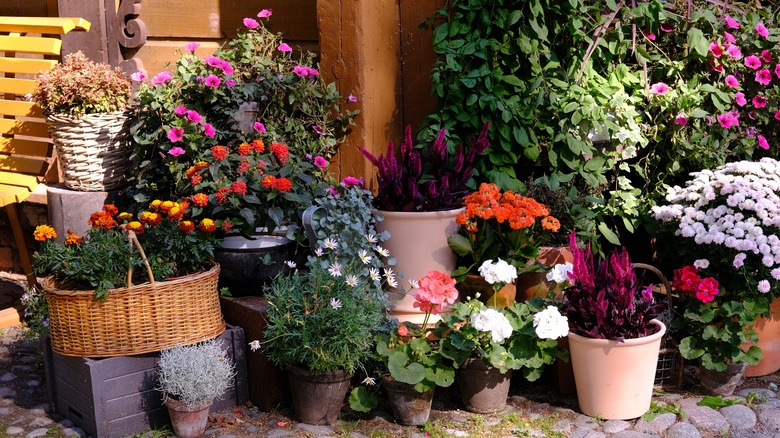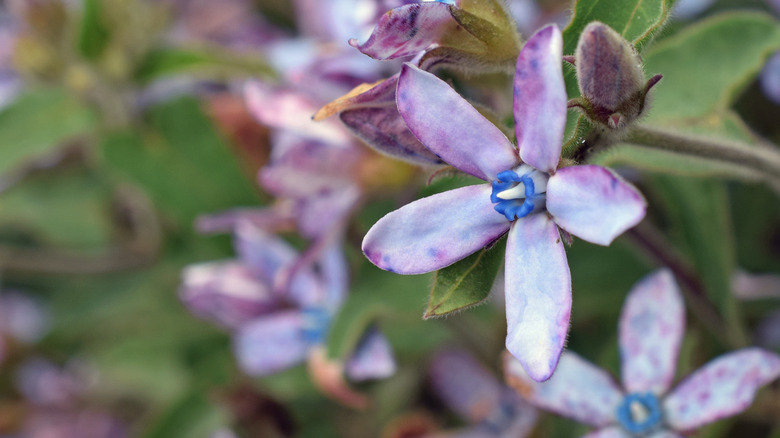The Must-Plant Flower For A Showstopping Garden Of Color From Summer To Fall
If you've been looking for ways to keep your garden from fading come midsummer, there's one must-plant flower that will create a showstopping and colorful display to leave your neighbors mesmerized on their daily walks. The Oxypetalum coeruleum, commonly known as tweedia, is a dazzling star-shaped flower with pretty leaves that resemble small hearts. Better yet, it's one of those flowers that will bloom in your garden until late fall. These showstoppers have the purest light blue blossoms when they first appear, and as time passes, they go through a wash of blues, purples, and even soft pinks. These five-petaled blooms grow in clusters of two to four flowers to create the most breathtakingly stunning watercolor effect that's soft, yet bold and vibrant.
With such an extended bloom season, from summer through fall, this flower will keep your garden beds vibrant well after the others begin to fade. It also attracts an array of pollinators like bees and butterflies, so your garden will be full of nature and life, even as temperatures start to decline in the fall. Whether they're tucked into a border of your garden bed or placed near a walking path, these colorful flowers will have everyone stopping to admire them. Plus, if you're looking for flowers to pair tweedias with, think summer favorites like zinnias, cosmos, or hibiscus, to keep your garden bursting with color.
How to plant tweedias successfully
If you've fallen in love with the idea of planting tweedias in your garden, the good news is that once these lovely blooms are properly placed in the ground, you'll appreciate the fact that they're low maintenance flowering plants, to easily brighten up your yard. They are, however, known to be hard to source at local nurseries, and starting them from seeds seems to be a go-to choice for many gardeners. You might find this is the easiest and most rewarding way to add these beautiful flowers to your garden.
When choosing a location for tweedias, you'll want to opt for a spot that gets an ample amount of sunlight with well-draining sand, clay, or silt type soil to prevent the roots from rotting. While they require at least six hours of direct sunlight a day, getting some shade during the hottest hours of the afternoon will be less straining on them.
As a non-invasive species native to South America, tweedias can be planted as annuals or perennials depending on the USDA Hardiness zone you're located in. In a majority of the U.S. they can be grown as annuals, but in zones 8 through 11, where winters are warmer, they'll thrive as perennials. However, those in zones 8 and 9 might need to take extra precautions in the winter if keeping them outdoors, by covering them using frost cloth. Finally, if your zone is expecting a very cold winter, then you may want to consider bringing them indoors until the spring.

